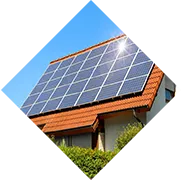invertor on grid 10 kw
Understanding the 10 kW Grid-Tied Inverter A Key Component for Renewable Energy Systems
As the world increasingly shifts towards renewable energy sources, the importance of efficient and reliable equipment becomes paramount. One of the most critical components in solar energy systems is the inverter, specifically the 10 kW grid-tied inverter. This device plays a vital role in converting the direct current (DC) generated by solar panels into alternating current (AC), which is then fed into the electrical grid. In this article, we’ll explore the functionality, benefits, and considerations of a 10 kW grid-tied inverter.
What is a Grid-Tied Inverter?
A grid-tied inverter is designed for use in solar power systems that are connected to the public electricity grid. Unlike off-grid inverters, which store energy in batteries, grid-tied inverters feed electricity directly into the grid. This not only allows solar energy users to offset their electricity costs but also contributes to the overall supply of renewable energy. The 10 kW specification indicates the inverter's capacity — it can convert a maximum of 10 kilowatts of DC electricity from solar panels into AC electricity.
Functionality of a 10 kW Grid-Tied Inverter
The primary function of a 10 kW grid-tied inverter is to ensure that the energy generated from solar panels is compatible with the grid. Here’s a breakdown of its key functions
1. DC to AC Conversion The inverter transforms the DC electricity produced by solar panels into AC electricity that can be used by household appliances or fed back into the grid.
2. Synchronization with the Grid It continuously monitors the grid’s voltage and frequency to ensure that the energy being supplied matches these parameters, enabling seamless integration.
3. Maximum Power Point Tracking (MPPT) Advanced grid-tied inverters use MPPT technology to optimize the power output from solar panels. This helps to maximize the efficiency of energy conversion under varying sunlight conditions.
4. Safety Features These inverters are equipped with protective features such as anti-islanding, which prevent the inverter from supplying power during grid outages, ensuring the safety of maintenance personnel.
Benefits of Using a 10 kW Grid-Tied Inverter
1. Cost Savings By utilizing a grid-tied inverter, homeowners can significantly reduce their electricity bills. Any excess energy produced can be sold back to the grid, resulting in potential income or credits.
invertor on grid 10 kw

2. Efficiency Modern 10 kW grid-tied inverters are designed to operate with high efficiency, often exceeding 95%. This means more of the energy captured by solar panels is converted and used, reducing waste.
3. Simplicity Since these systems do not require battery storage, the installation is typically easier and more cost-effective. This simplicity also translates to lower maintenance requirements over time.
4. Environmental Impact By harnessing solar energy and using a grid-tied inverter, individuals contribute to a decrease in reliance on fossil fuels, thereby reducing their carbon footprint and supporting sustainable energy practices.
Considerations When Choosing a 10 kW Grid-Tied Inverter
While there are many benefits to grid-tied inverters, there are several factors to take into account when selecting one for your solar system
1. Compatibility with Solar Panels Ensure that the inverter matches the specifications of your solar panel system, in terms of voltage and output.
2. Quality and Certification Look for inverters that are certified by relevant standards, such as UL or IEC, which indicate their reliability and performance.
3. Warranty and Support A robust warranty period is essential for peace of mind. Choose manufacturers that offer good customer support in case issues arise.
4. Installation Professional installation is recommended to ensure safety and compliance with local regulations.
Conclusion
The 10 kW grid-tied inverter is an essential component of modern solar energy systems, enabling users to effectively harness and utilize solar power. With its ability to convert DC to AC, maintain grid synchronization, and optimize energy production, it provides countless benefits, from significant cost savings to a lower environmental impact. As renewable energy continues to grow in importance, understanding and investing in quality grid-tied inverters will be crucial for consumers looking to make the most of their solar energy systems.
-
Unlocking Energy Freedom with the Off Grid Solar InverterNewsJun.06,2025
-
Unlock More Solar Power with a High-Efficiency Bifacial Solar PanelNewsJun.06,2025
-
Power Your Future with High-Efficiency Monocrystalline Solar PanelsNewsJun.06,2025
-
Next-Gen Solar Power Starts with Micro Solar InvertersNewsJun.06,2025
-
Harnessing Peak Efficiency with the On Grid Solar InverterNewsJun.06,2025
-
Discover Unmatched Efficiency with the Latest String Solar InverterNewsJun.06,2025







